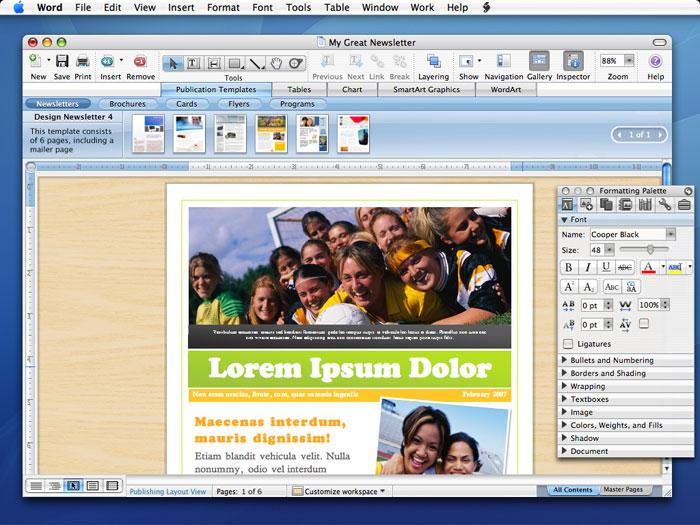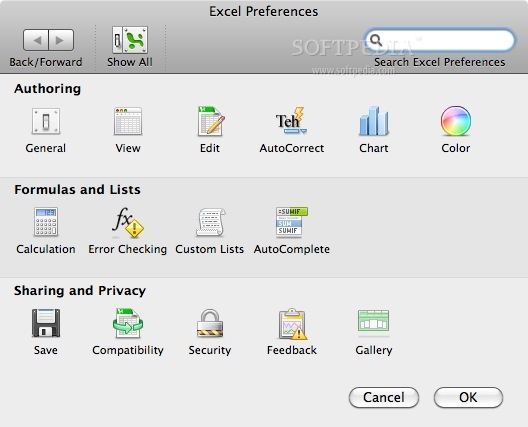

- #Microsoft office 2008 for windows 10 64 bit full
- #Microsoft office 2008 for windows 10 64 bit software
- #Microsoft office 2008 for windows 10 64 bit free
However, KDE’s KOffice and GNOME’s Gnome Office either lack integration between components or have some components that are too basic in functionality. SoftMaker Office and aren’t the only office suites available for Linux users. For instance, on a Celeron 1.3GHz laptop with 1GB RAM, TextMaker launches in less than a second, rather than the 8-10 seconds it takes to launch Writer. All SoftMaker apps launch almost instantaneously, even on relatively dated hardware. The first thing you notice about any SoftMaker app is its speedy launch. You also have the ability to create databases and to draw some objects, as in, but from within the other apps rather than from standalone apps.
#Microsoft office 2008 for windows 10 64 bit software
It provides a word processor (TextMaker), a spreadsheet app (PlanMaker), and a presentation software (SoftMaker Presentations). SoftMaker Office 2008 for Linux, announced last month, is the first non-beta release of the office suite for Linux, which also runs on Windows, Pocket PC, and Windows CE. We looked at a beta release of SoftMaker Office 2006, which lacked presentation software and bundled an incomplete spreadsheet program in fact its only real usable component was the word processor. This isn’t SoftMaker Office’s first Linux release. Sure, it costs $80, but you can increase your karma by running it on Linux.
#Microsoft office 2008 for windows 10 64 bit full
It’s no -killer, but it’s a full featured office suite that has great compatibility with Microsoft Office. If changing over to an open document format is not an option, try SoftMaker Office.
#Microsoft office 2008 for windows 10 64 bit free
Restart the computer to apply your changes and completely remove Office 2007 from the Windows Registry.The free and open source office suite might be a killer app for many, but its inability to properly display documents created in the proprietary Microsoft Office formats hinders its widespread acceptance in multi-OS business environments with many legacy. Return to "Installer" and expand "Products." Delete " F01FEC." Return to "Installer," expand "UpgradeCodes," and delete "F01FEC."Įxpand "Win32Asemblies" from under "Installer." Right-click " Office12," select "Delete," and then click "Yes." Minimize "HKEY_LOCAL_MACHINE." Expand "HKEY_CLASSES_ROOT," "Installer," then "Features." Delete "*F01FEC." Return to "HKEY_LOCAL_MACHINE." Expand "SYSTEM," "CurrentControlSet," then "Services." Delete the "ose" folder. Return to "CurrentVersion," expand "Installer," and then right-click "Upgrade Codes." Click "Delete," then "Yes."Įxpand "UserData" from under "Installer," and then expand "S-1-5-18" and "Products." Right-click "*F01FEC," select "Delete," and then click "Yes." Right-click the subkey and then select "Delete" from the context menu. Select each subkey under the "Uninstall" folder and review the values in the right pane to find the data " \Office Setup Controller\Setup.exe. Expand "CurrentVersion," then "Uninstall." Delete the folder "*0FF1CE." Return to the "Office" folder and then expand "Delivery," "SourceEngine," then "Downloads." Delete " 0FF1CE}-." Minimize "HKEY_CURRENT_USER."Įxpand "HKEY_LOCAL_MACHINE | SOFTWARE | Microsoft | Office." Right-click "12.0," click "Delete," and then click "Yes." Restore this file using the "Import" option if problems occur after deleting the following folders.Įxpand the folders "HKEY_CURRENT_USER | Software | Microsoft | Office." Right-click "12.0" and then select "Delete" from the context menu.Ĭlick "Yes" when prompted to remove the folder from the registry. Select "File" from the menu bar and then click "Export." Choose a destination folder for the backup.Ĭreate a name for the registry file and then click "OK" to create a backup of the registry.

Enter "regedit" or "regedit.exe" into the dialog box and then click "OK."Ĭlick "Computer" in the left pane.


 0 kommentar(er)
0 kommentar(er)
